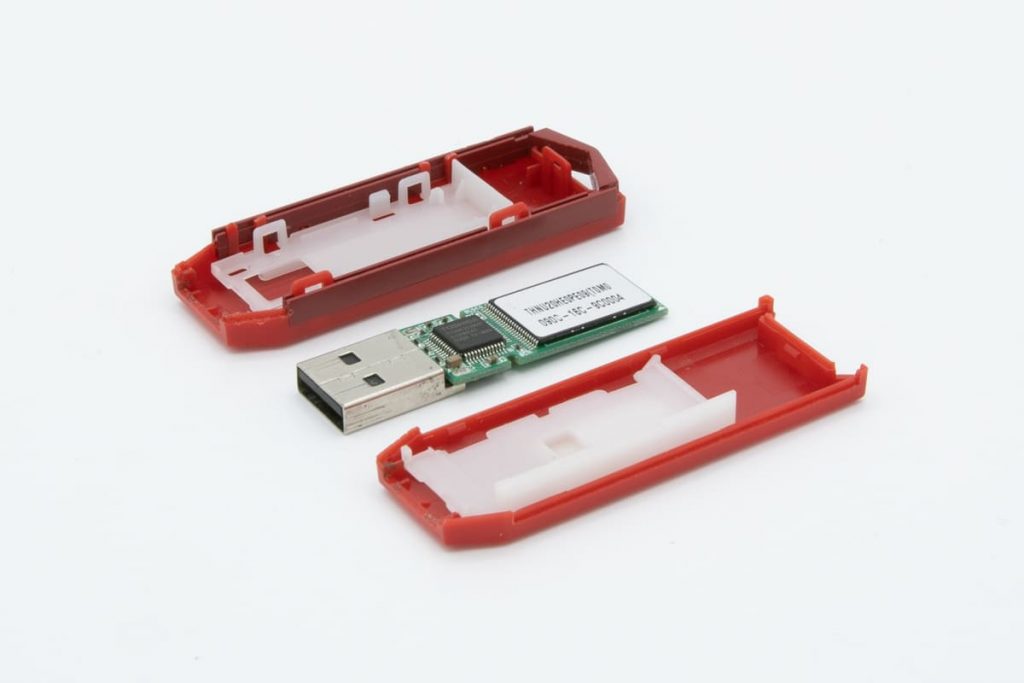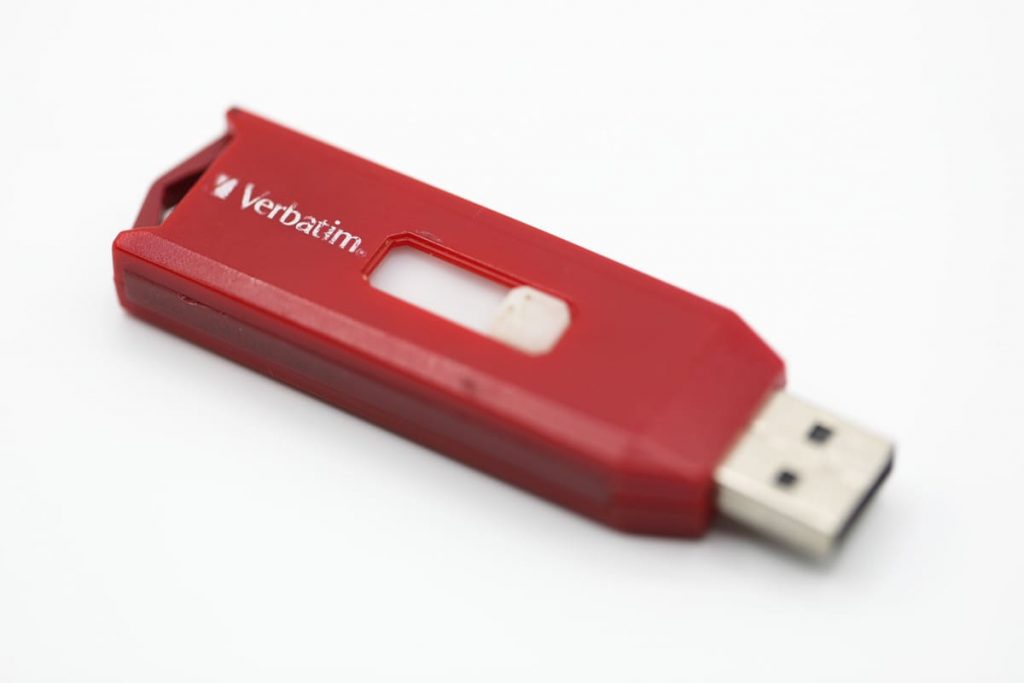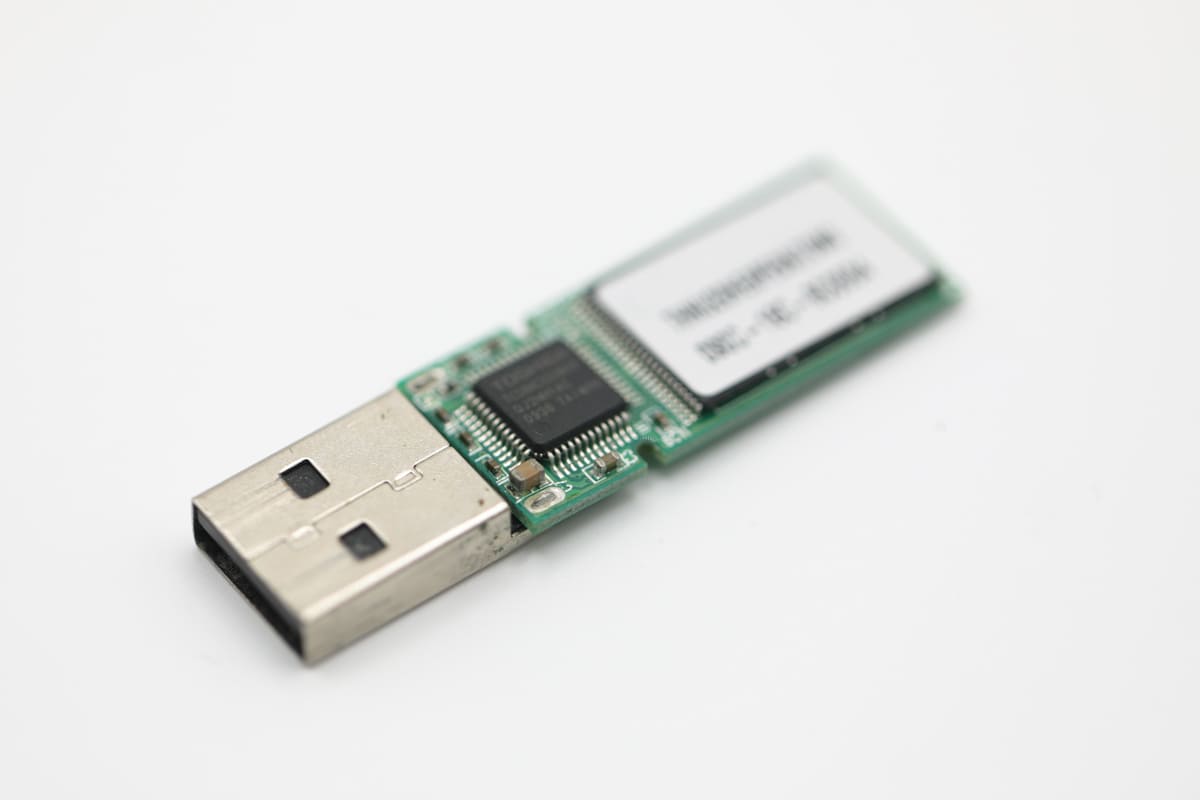Monolithic flash drives differ from ordinary flash drives. They are made in the form of a single monolithic element, i.e., it is impossible to allocate a memory chip and a controller.
The flash drive looks like a single piece of plastic. Monolithic flash drives use frameless elements, a controller, and a memory chip, which are filled with a compound.
First of all, the difference is that here memory and controller – it is one-piece, as well as a USB connector. Despite the many similarities, monolithic flash drives have much more differences than conventional USB drives.
The main features should include the fact that the parts of such a device, forming the hardware architecture, are the so-called monolith. And this is where the name of this type of device came from.
Like classical drives, monolithic devices periodically fail. However, the recovery of such devices, as well as the restoration of data from monolithic flash drives is much more difficult.
Monolithic Flash Drive Recovery
In order to recover data from the monolithic flash drive, it takes a lot of steps, among which the most challenging stage – is the study of two control contacts power supply, data transmission. Before starting the recovery work, data recovery experts need to find an identical donor memory card that is fully functional.

The donor work is carried out in relevant laboratories, and searches are made to locate the necessary contacts. The most common fault of flash drives of any type is a result of the physical deterioration of flash cells.
To recover the data from a drive with this kind of failure, it is necessary to unsolder and read on a special device.
Monolithic Flash Data Restoration Case
Recently we received a monolithic flash drive with no backups. It is more complicated to work with such cases as any wrong move can lead to completely losing all the data.
Our engineers started the recovery process after the donor monolithic flash drive was received. First, they scratched the cover of the storage to get direct access to contacts. Then we scanned the client’s drive to connect the necessary contacts to our recovery tools and read Dumps. The next step was to research the obtained Dump, conduct a preliminary analysis, emulation of the controller operation, and get the original image of the storage data.

This recovery procedure needed to be done very carefully as the NAND core can be damaged.
After the procedure was done, the customer checked and reviewed the recovered files. As the data did not exceed the limit, he could receive them via a secure cloud storage link. All these described processes were held in ISO Certified Class 10 Cleanroom.
A cleanroom is a room of a certain area where by means of special equipment, a fixed number of mechanical particles of a specific size, weights, compounds chemical substances per unit of air volume is maintained. The design is developed to minimize the insertion and generation of particles in the room, so drives and their parts will not be damaged.
The stages of work are described in a very simplified way and do not reveal the full complexity of the work on recovering files from monolithic flash drives. Fill in a request form to start your case today. Our dedicated customer service will contact you in no time.
